In the Netflix-style dance bonanza that San Francisco Ballet is gifting the London crowd over the first week of June, at Sadler’s Wells, there is something for everyone, or at least there should be.
That is after all the multi-choice catch-phrase, which promises abundance and abundance of choice. Four shows, three pieces per show, do the maths. It’s a lot of dancing, a lot of costumes, a lot of set-changes, a lot of music.
But as with Netflix, there also is an Invisible Hand guiding the wealth, not of the nations, but of selection, honing tastes and encouraging certain expectations whilst hushing up others. This is as it should be for a dance company (since there is – thank goodness a multipoly of dance and not a monopoly as with the film-mogul): a company must find its style, its particular taste and tendency, should want to explore the variations within that more or less flexible frame.
After feasting – but it feels like binge-watching – three shows, nine pieces!, almost in a row, day after day, the movements of the Invisible Hand are coming to light. Verdict?
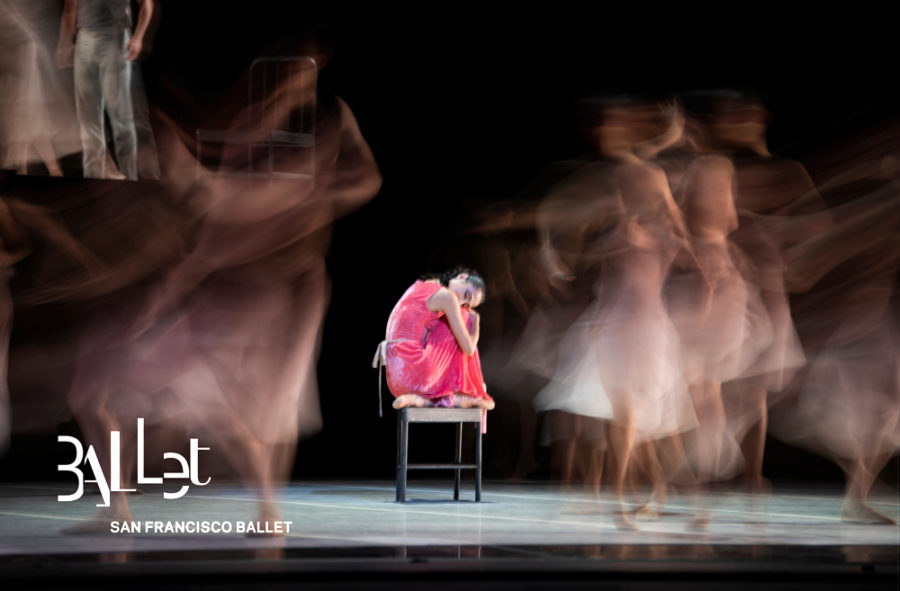
The SFB company is of the sentimental watchmakers’ kind. The kind that designs and anticipates to its minutest detail every mechanism and future unfolding of its world. No irregularities are allowed, no bumps, no chinks.
This is, in essence, the DNA of the SFB. In this they are also very much in line with the ideals of American classical dance, a dream of joining together the tradition from the old continent which is their connection to a borrowed past, and the ideals of American optimism which, in the arts, somehow always and ever expresses itself in displays of happy marriages and true love; and in dance, this comes out as perfectly organised, duet-centred pieces.
Everything is perfect in the dancing, that is to say, everything is perfectly in control.
Programme C, in which the company dances pieces by the Australian choreographer Stanton Welch, the British resident Royal Ballet choreographer Liam Scarlett and New York City Ballet maverick Justin Peck expresses, in all its polyhydric forms, the control-freakiness which runs deep in the Company. The dancers are so evidently comfortable in these pieces, in contrast with the tensions and ultimately out of tune effects which came out from Programme B.
Programme B composed of pieces by Taiwanese-American choreographer Edwaard Liang, British choreographer Cathy Marston, and South-African Arthur Pita demanded, in part, that the dancers lose control. What, in a word, they just can’t do.
This came out exponentially in Pita’s piece, set to music by Björk and meant to be a total unleashing of sexiness and fun in a mix of decadence and gothic: it fitted the SFB dancers just about as well as rap music at a Viennese ball.
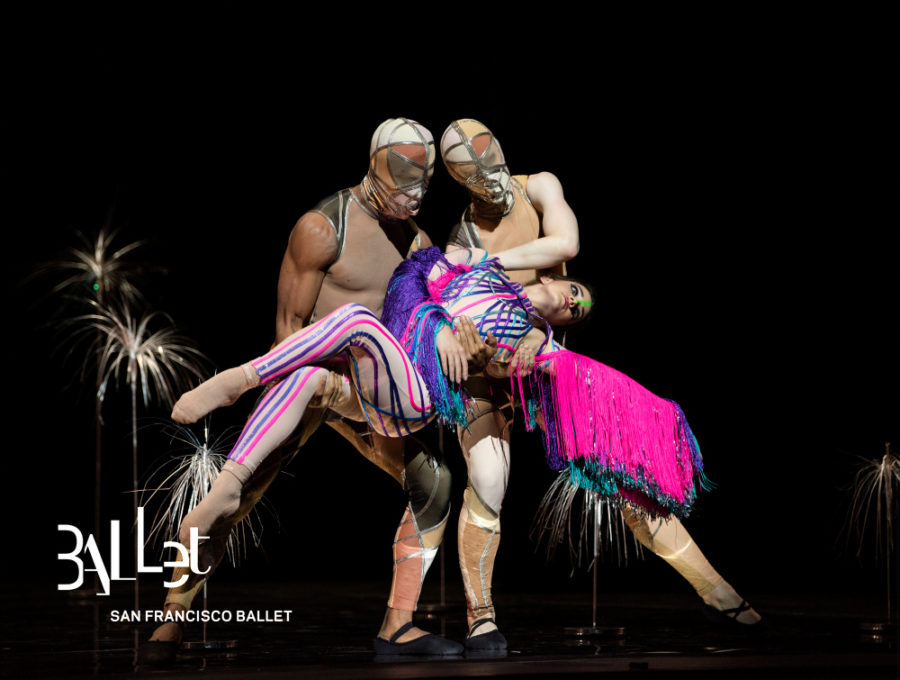
But of course, that was the point: provocation, titillation, tongue-in-cheek poking the old beast on point shoes. But that sort of brazenness is not so original by now. It has been done, recently and to absolutely wondrous effects. The apex was reached by Wayne McGregor with his Carbon Life from 2012, in which he transformed the whole Royal Opera into a pulsating hip hop arena with dancers dancing their hearts out, with both men and women on points. More recently still, Marion Motin, in her piece Rouge at Sadler’s Wells in May 2019, had Rambert Dance Company go way more rave-like mad on stage than any of those demure and cautious jumps on point that the San Francisco Dancers dared to go wild on last Friday.
The exception was one solo in Pita’s piece, danced by a masked dancer whose total embrace of the dance, with almost magical fluidity in his twirling, and jumping or – at one moment- just plain sitting, suddenly reminded everyone how meaningful, free and exhilarating dance can be; how, in other words, it can say something if only dancer and choreography spark.
But that masked soloist – who goes from sad mask to happy – confirmed the shortcomings of the encounter between watchmaker dancers and wild-spirited choreographer. For it was the mask that was so liberating for both. No need to flash contrived smiles as so many of the SFB dancers seem intent on doing.
All three pieces of Programme C shared in common that there was no point to the dance other than the dance: and that was a much better fit for the Company.
Stanton Welch’s piece, Bespoke, created in 2018 was a tragedy in five acts about nothing, but really nothing, that amazing not-thingness of time passing and occupying it with jumps, and pirouettes, and perfectly placed small and big shuffles, petits-battements, chassés-croisés, arabesques, all that joyous vocabulary from the ballet class which got its spotlight in a celebration of pure and precise energy.
The programme description of the piece insists on its being a depiction of the dancer’s losing battle against time, but surely that is but a metonymy of the animal condition in general: a few twirls, a few smiles, time for a brief love-encounter – the inescapable pas-de-deux – and it’s lights out.
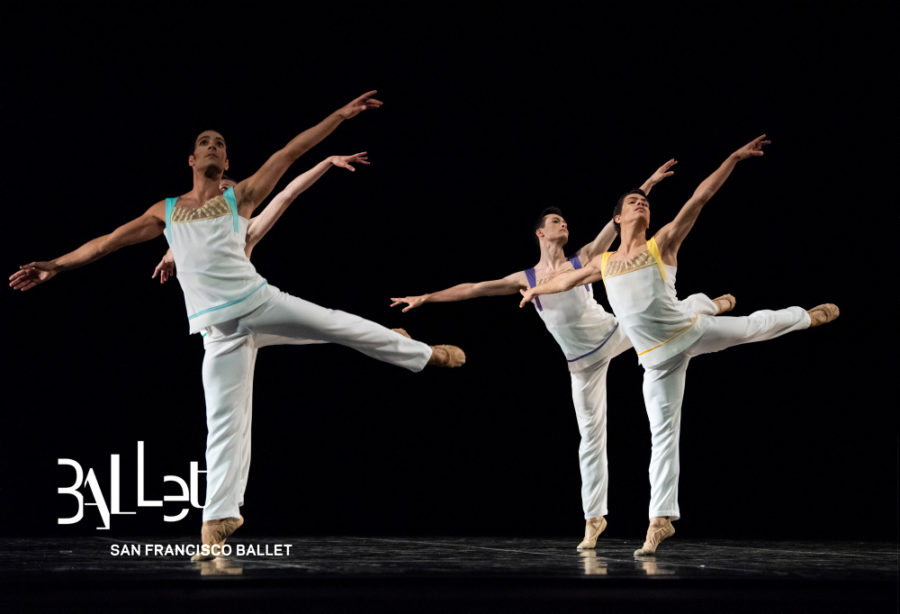
The ending of the piece, in which each couple dances its last dance and melts into the floor bore echoes to Haydn’s Symphony of Farwell: the only way to leave the dance, to leave the music, is to dance till you drop. The floor is the antithesis of the sentimental watchmaker-dancer for it represents the one thing he cannot control or move (neither physically nor emotionally).
Since partnering for the sentimental watchmaker can only ever mean a lovers’ meeting, all the pas-de-deux throughout the evening were indeed lovers’ trysts. In the clean lines of Welch’s piece, the political correctness of it all also expressed itself in the discreet man-on-man couple amongst the six pairs that came in and out on stage. An extra (unnecessary) clarification of the dynamics of the pas-de-deux – a Neflix-ation of the duet, in which a show is not a show if two people do not meet and live happily ever after.
If dance is the exploration of what the body can do, then there are far more things in heaven and earth, Horatio, than there is in your lovers’ trysts. The bimorphism of the human species is the earth-water-air-and-fire of the dance-maker, and it is sad to reduce duets to the meeting of lovers and expand only on the diversification of sexual partnering.
But this is a leitmotiv of the Company’s dancing choices. Whereas it suits very well the examination of classicism in the Ratmansky programme, it is overbearing in other, self-professedly modern pieces, as in Welch, Scarlett as also in Liang.
Edwaard Liang’s, Infinite Ocean, created in 2018 evolves around a central couple dancing, gushingly with over-cooked baneful looks, which were utterly out of place, and artificially conveying a sense of mournful loss – the reason of which one learns about in the programme, something to do with the choreographer’s own biographical encounter with the death of a friend. But whatever the outside story is, it is irrelevant to the dance if the dance itself does not justify its own internal rationale.
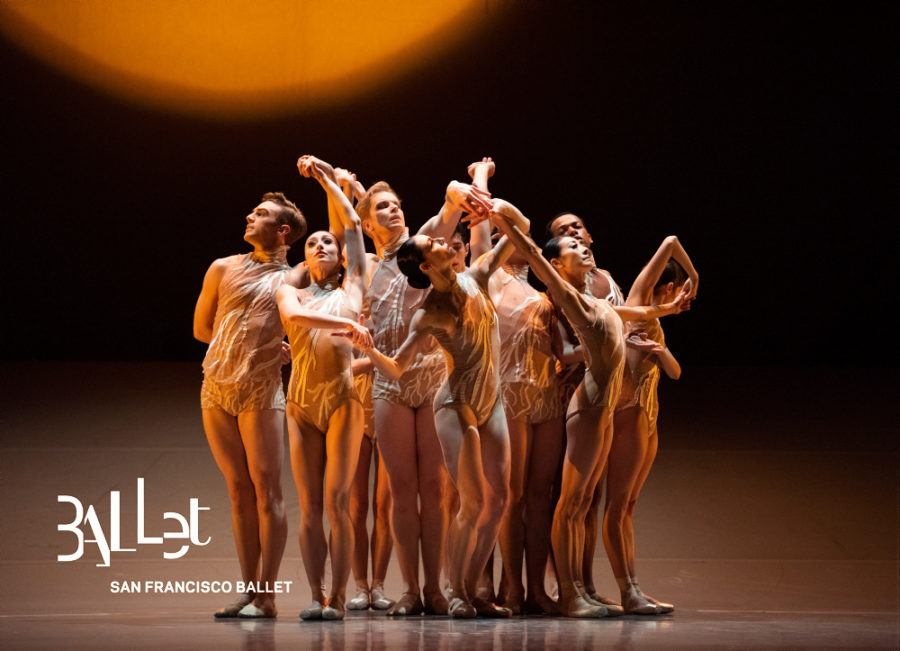
Liang’s piece is a mish-mash of Miss Saigon meets figure-skating meets point shoes. The indulgent sentimentalism with swishing group movements is at times shaken into exquisite moments, as when the girls get on point in a deep second position plié and, with rounded arms and drooping heads, look like graceful herons at dusk by an exotic river.
So, in comparison – and we are forced to compare, for that is the Netflix-style injunction – Liam Scarlett’s Hummingbird in Programme C was refreshing and fun without the tragic looks. Or almost. Similar to Liang’s piece, Scarlett’s choreography fluctuates between genres, some West Side Story vibes give way to a tragic war-time parting scene between one sad-looking couple, counter-balanced by two happy, more simple pairings.
What is particularly interesting is Scarlett’s attempt at embracing the control-freakiness of the company spirit and yet resist telling a story. He does so by making the couple’s duets somehow meaningless. But at the same time, the contrasts between the two happy-go-lucky pairs and the central tragic pair seems to demand a story, which we never get. This keeps the audience on edge and leaves us puzzled – which is good.
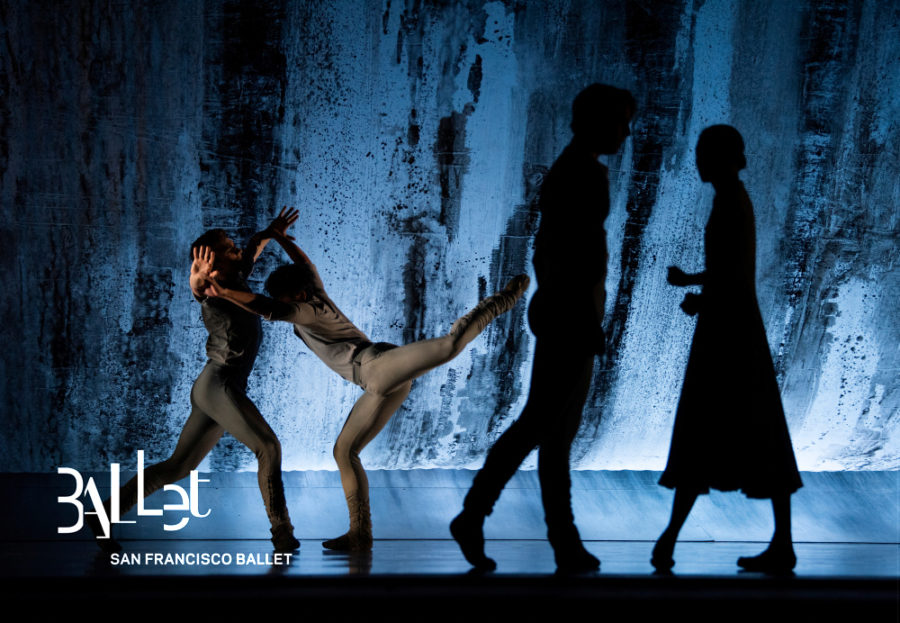
Justin Peck, on the other hand, goes full-blown story-telling. His piece, Hurry UP, We’re Dreaming, also from 2018, is a coming-of-age ballet, which is the theatricalised experience of an American teenager dance movie, telling the stories of jealousies, locker-room love-scenes and group-support represented by dancing circles and holding hands. The soundtrack sets us back to a fictionalised West Coast 1980s, as do the costumes, hairdos and of course, the sneakers.
And it’s all about the shoes, really; how you wear them, the sound they make as they squelch on the floor in glissades full of swagger, and how they go silent in a pirouette, and make everyone just look… cool like an american teenager.
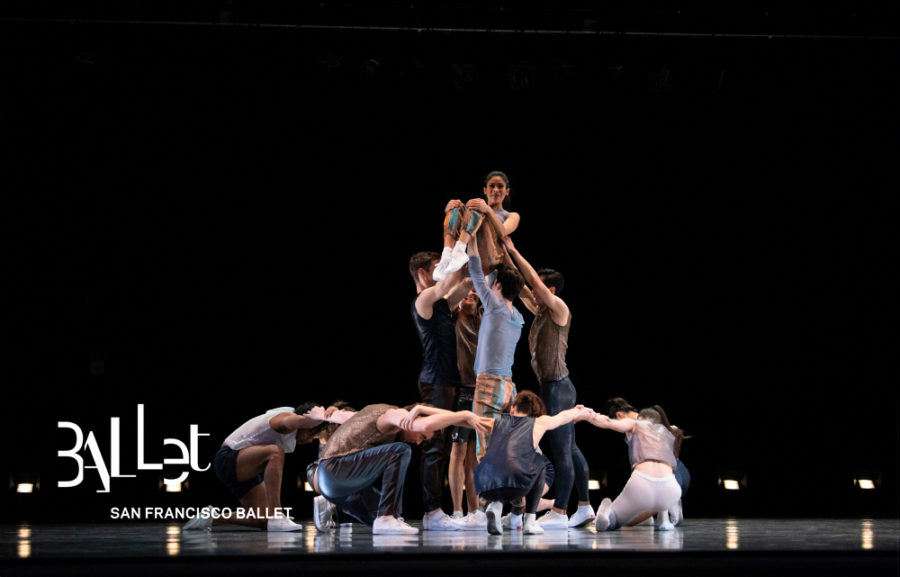
The last pas-de-deux danced by Joseph Walsh and Dores Andres was redeeming to the skies. It came out of nowhere, and by then, the rebel in me was subdued to sit back and gorge on a yet another sexy lovers’ scene. But this time it is celestial, un-sentimental; as though this couple had finally figured out that there is more to life than lovers’ chatter, and they begin to build world. The watchmaker’s work is done.
Reviewed at Sadler’s Wells


